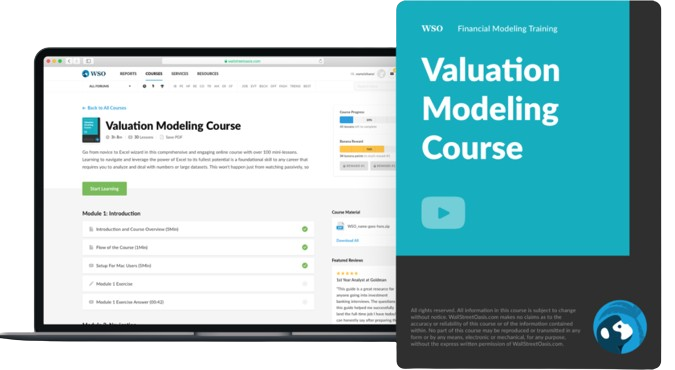Risk Rating Models
Calculating the estimated loss from an investment, investors utilize the chance of default.
What are Risk Rating Models?
Risk rating models are instruments made for calculating the likelihood of default. The idea of risk rating is closely related to these models because they presuppose other assessments in risk management, underwriting, capital allocation, and portfolio management.
A borrower's or debt security's probability of defaulting in the future is calculated using various criteria and a set of rules that fall under the risk rating models umbrella.
These elements and guidelines often provide a number or symbol-based rating that summarizes the default risk posed by the borrower or debt security.
The probability of investment, asset, or loan defaulting in financial markets is defined as an item that will not provide a profit for its owner during its lifespan and that its price would fall to zero or will be worthless in the future.
Investors utilize the chance of default to calculate the estimated loss from an investment. Therefore, risk rating models are vital for making loan choices and managing and building portfolios.
They provide lenders, analysts, and portfolio managers with a relatively objective method of classifying borrowers or particular assets according to their creditworthiness and default risk. A bank can use them to set and track the risk level in its loan portfolio and determine whether any adjustments are necessary.
Understanding Risk Rating Models
Businesses, governments, and investors conduct these analyses before starting a new venture. To assign numerical values, quantitative analysis employs mathematical simulations and models.
Quantitative analysis reduces all problems to facts and statistics, eliminating language, interpretation, and emotional ambiguity. Smaller datasets can be extended to study and forecast the behavior of more significant populations if done correctly and by stringent guidelines.
While creating a theoretical risk model for a specific situation, qualitative analysis depends on an individual's subjective opinion. Therefore, qualitative analysis is less concrete. Instead, it is about irrational qualities and views, those that cannot be quantified.
The borrower's health, business features, and macroeconomic circumstances are a few aspects typically considered when risk rating models are utilized.
Other elements might include a judgment of a company's competitive advantages, the dependability of the management, political concerns, and environmental hazards. When assessing something with these elements, it is sometimes required to exercise personal judgment because it is difficult to measure or evaluate them objectively.
One of the main methods used by financial organizations to stop money laundering is customer risk-rating models. Most banks now utilize models that are based on an evaluation of threat indicators.
Factors Used in Risk Rating Models
Many risk evaluation methods assign a management score to a corporation based on empirical and subjective criteria.
1. Data versus judgment
Statistics or judgment may be given greater weight by the approach used to create the risk rating model. However, it will depend on the accessibility of pertinent data, the reliability and quality of the data, and the simplicity of storing and accessing such data.
2. The Borrower's Economic Situation
Various ratios are frequently used to evaluate a borrower's financial stability.
- Determine a borrower's liquidity to see if they have enough money to cover their present debts. The cash, current, and acid ratios are a few examples of these ratios.
- Solvency ratios, commonly called leverage ratios, evaluate a company's capacity to fulfill its long-term financial commitments.
- These ratios, which comprise the equity and debt ratios, analyze a corporation's capital structure.
- Cash flow ratios evaluate a company's capacity to produce cash flows that may be utilized to settle its debts by comparing cash flow measurements to other financial KPIs or leverage indicators.
These ratios, for instance, are the cash flow to net income ratio and the cash flow coverage ratio. - Profitability ratios show if a corporation makes money from its regular business operations. These ratios are a few examples of operating margin, EBITDA margin, and return on invested capital.
3. Industry Specifications
The capacity of a borrower to repay their debts may not be solely based on corporate-specific variables. For example, macroeconomic conditions and industry features can impact the creditworthiness of a corporation.
The present industry or business cycle stage can impact a company's creditworthiness in any industry. As a result, even financially sound businesses may experience a loss in creditworthiness.
For instance, during the macroeconomic cycle's recessionary phase or the industry cycle's drop.
4. Environmental and political risks
Additional categories of risk characteristics are also included in risk rating models:
- Political risks consider things like the likelihood of war, the application of the law, and the dependability of institutions, to mention a few.
- Environmental risks might arise from environmental damage or contamination due to business operations. In addition, financial repercussions and unfavorable rules that restrict or interfere with a company's activities may result.
5. The reliability and quality of management
Evaluation of the management's tenure and experience includes more subjective factors like the significance of the incident and credentials and more objective ones like the management's seniority and years of experience.
A thorough examination of a management team's track record of value generation, their ability to communicate, the caliber and frequency of the information they release, and their choices about capital allocation.
Validation of a Risk Rating Model
Model risk happens when a financial model is used to assess quantitative information, such as a business's market risks or value transactions, and the model fails or performs insufficiently, which harms the firm.
Models can be helpful tools for investment research. Still, they can also be vulnerable to many dangers, including the use of inaccurate data, programming mistakes, technological faults, and incorrect interpretation of the model's conclusions.
Only if the model is exact enough should it be utilized. When a model is validated, it is determined whether the risk assessment it produces is sufficiently consistent with the results.
A reliable assessment model should not underestimate the risks since doing so would lead to unforeseen losses and recovery expenses. And to avoid noncompetitive bidding and the failure of possible earnings.
Risk Rating Models FAQs
Model for estimating the risk of default is called a risk rating tool. These models assume additional evaluations in risk management, underwriting, capital allocation, and portfolio management.
Data/Judgment, borrower's financial health, environmental/political risks, and quality management.
We look at liquidity, leverage ratios, profitability ratios, and cash flow ratios.
Poor judgment can result from utilizing a model with poor specifications, programming or technological flaws, or data or calibration issues.
Researched and authored by Chadi Kattoua | LinkedIn
Free Resources
To continue learning and advancing your career, check out these additional helpful WSO resources:




or Want to Sign up with your social account?